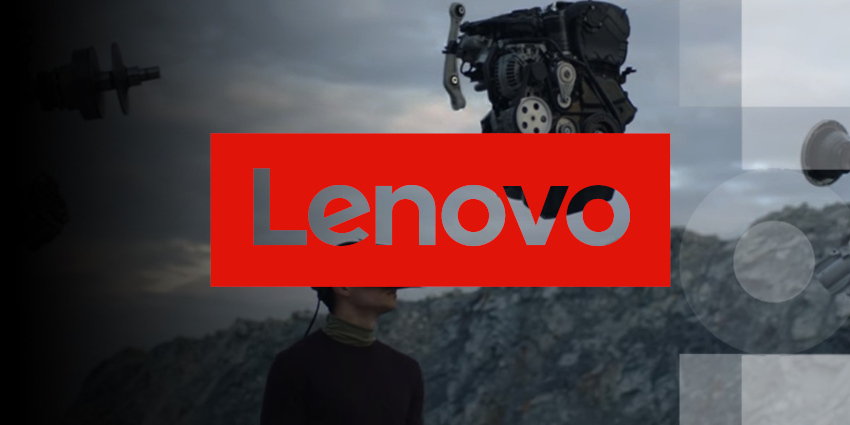Lenovo announced this week it had launched its ThinkStation PX, P7, and P5 desktop workstations for high-demand workloads for the enterprise.
The new computer systems feature up to 120 Intel processor cores and top-spec NVIDIA RTX graphics processor units (GPUs) for unparalleled performance.
The company’s latest products also include advanced thermals, novel chassis designs, and BMC Software remote system monitoring capabilities.
Lenovo’s enterprise-focused workstations empower virtual, augmented, and mixed reality (VR/AR/MR) production, machine learning (ML), immersive learning, computer-aided engineering (CAE), reality capture, and artificial intelligence (AI), among others.
Rob Herman, Vice-President of Workstation and Client AI Business, Lenovo, said that the new devices had been “meticulously designed with a customer-centric lens” to meet business outcomes.
He added: “We partnered closely with Intel®, NVIDIA and Aston Martin to ensure these new systems offer the best of form and functionality by combining a premium chassis with ultra high-end graphics, memory and processing power.”
The three devices will open sales in May this year, and will leverage Lenovo’s ThinkReality platform for unmatched security, interoperability, and accessibility for end users.
Lenovo-Aston Martin Partnership
Lenovo recently teamed up with the British luxury automaker to develop its novel ThinkStation chassis. The joint effort aimed to incorporate Lenovo’s red design with enhanced features and customisation capabilities.
Inspired by Aston Martin’s DBS grand tourer, the chassis features a toolless chassis for massive levels of flexibility and ergonomics. It also offers 3D hex ventilation openings, reconfigured air baffles, and Lenovo’s tri-channel cooling system, along with modular, front-access chassis designs.
Cathal Loughnane, Director of Partnerships, Aston Martin, added,
“The design collaboration of Lenovo’s new ThinkStation chassis has been an amazing three-year journey. As Lenovo workstation customers ourselves this project was a unique opportunity to craft a high-performance system that we will use to design and develop our high-performance vehicles.”
Lenovo ThinkStation PX
The Morrisville-based firm also includes high-end specs for its ThinkStation PX systems, which provide both desktop and data centre capabilities. It offers 53 percent with its fourth-gen Intel Xeon Scalable processors of up to 120 cores, compared to previous generations.
ThinkStation PX devices also feature a four-dual-slot NVIDIA RTX 6000 Ada Generation GPU for simulations, high-end programming, and other demanding tasks.
Additional specs include 2 terabytes of DDR5 memory and PCIe Gen 5 lanes for multi-user virtualisation. A robust 1850-watt power supply unit (PSU) also backs systems with huge performance gains.
Lenovo ThinkStation P7
Next up, Lenovo’s ThinkStaiton P7 comes equipped with Intel Xeon W Processors for up to 56 cores in a single socket for multithreaded tasks.
These computers can power both desktop and data centre environments and offers three dual-slot NVIDIA RTX 6000 Ada Generation GPUs to support immersive reality projects, content creators, designers, architects, and data scientists.
Roger Chandler, Vice President of CCG and General Manager for Creator and Workstation Solution Team, Intel, added,
“We are excited to offer the new lineup of Xeon W processors, built on a breakthrough new compute architecture and packaging with significantly more cores to accelerate performance across the fastest growing workloads that businesses depend on today, These processors are built to ensure professional innovators, including creators, engineers and data scientists, have the power and stability needed to create the industry’s latest innovations”
ThinkStation P5
Lenovo’s third offering, the ThinkStation P5, aims to achieve enterprise-level tasks requiring mid-tier, versatile graphics. It also includes a fresh chassis design, top-end Intel Xeon W chipsets of up to 24 cores, and two NVIDIA RTX A6000 GPUs.
An additional selection of DDR5 memory and PCIe Gen 5 bandwidth allow users to customise their setups with impressive options. Industries in reality capture, extended reality (XR), complex 3D CAD, building information modelling (BIM), and architecture, engineering, and construction (AEC) can benefit immensely from the device’s performance and capabilities.
Bob Pette, Vice President of Professional Visualisation, NVIDIA, explained,
“NVIDIA offers the world’s most powerful visual computing GPUs for desktop workstations. These are featured in all three of Lenovo’s new ThinkStation desktop systems, equipping data scientists, engineers and creative professionals with the high-performance technology they need to work with massive datasets, innovate faster, and elevate their AI and compute-intensive workflows of tomorrow”
Expansion of XR Solutions
The news comes amid Lenovo’s release of the ThinkReality VRX headset, which offers next-gen Snapdragon XR2+ chipsets, six degrees of freedom (6DoF), pancake lenses, and other immersive enhancements.
Along with the VRX, Lenovo’s product lineup includes the iconic ThinkReality AR3 smart glasses, Mirage VR headset, and other devices aimed at facilitating the enterprise metaverse.
Such tools will help to drive interoperability and a cohesive metaverse ecosystem capable of driving development for immersive industries. These interconnected tools across the ThinkReality platform of hardware, software, and services allow industry verticals to leverage immersive tools for the next wave of XR experiences.
Additionally, these will help build a strong, measurable return on investment (ROI) for businesses as the industrial and enterprise Metaverses come to fruition.







